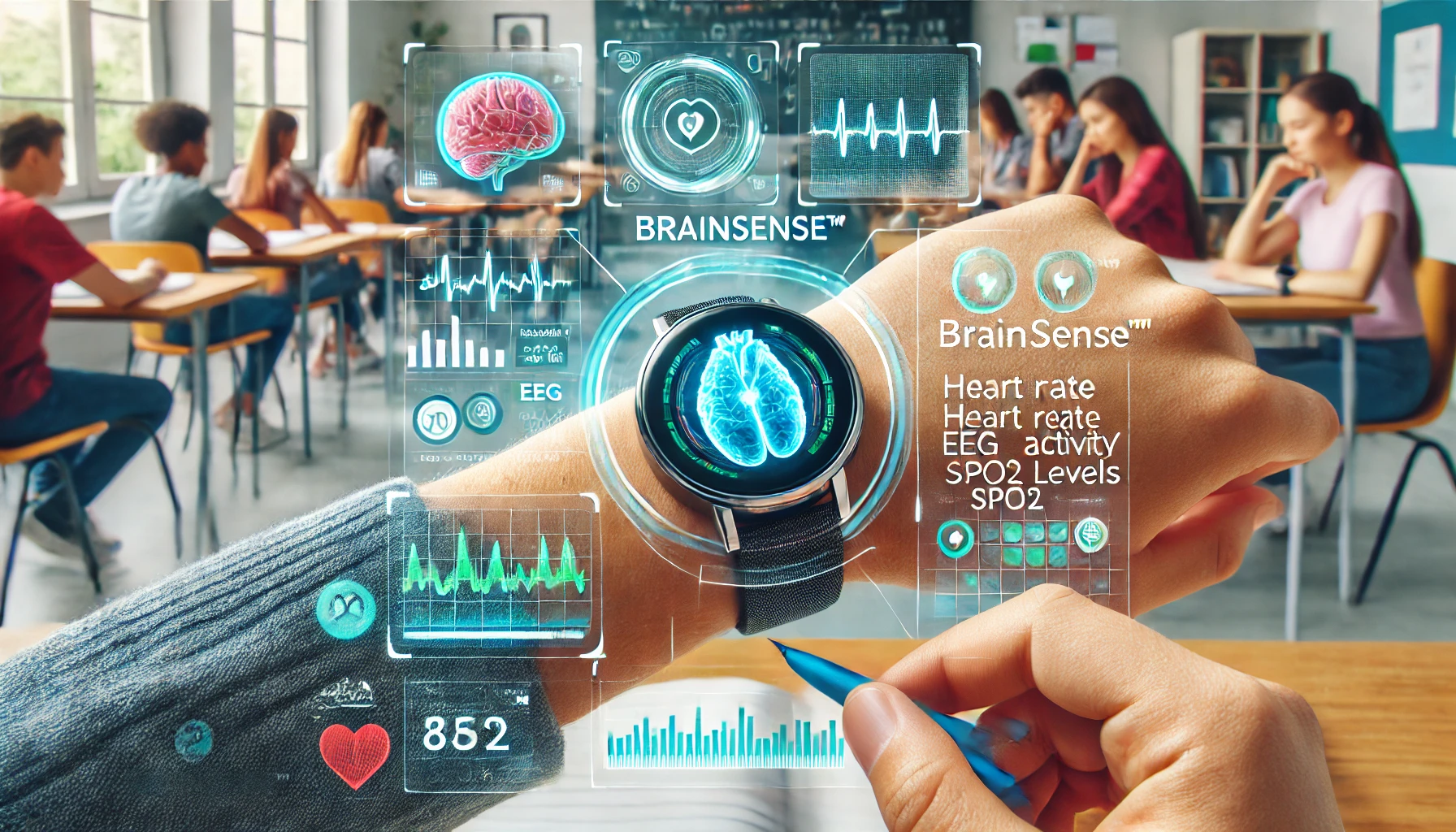With the rapid advancements in artificial intelligence technology, educators and experts are exploring the potential for AI to transform the traditional educational landscape. Imagine personalized learning experiences, instant feedback on assignments, and customized study plans catered to each student’s needs. However, as with any new technology, there are challenges and limitations that must be carefully considered. Can AI truly revolutionize the way we learn and teach? Let’s probe into the possibilities and implications of incorporating AI in education.
The Current State of Education
Challenges Facing Traditional Educational Systems
To truly understand the potential impact of artificial intelligence on education, it’s crucial to first recognize the challenges facing traditional educational systems. These challenges include outdated teaching methods, overcrowded classrooms, limited access to resources, and a one-size-fits-all approach to learning. These issues can hinder students’ ability to fully engage with the material and reach their full potential.
The Need for Innovation and Reform
For education to truly evolve and meet the needs of students in the 21st century, there is a pressing need for innovation and reform. By harnessing the power of artificial intelligence, schools and educators can personalize learning experiences, provide real-time feedback, and adapt curriculum to suit individual student needs.
Current educational systems are often rigid and standardized, leaving little room for customization based on individual student strengths and weaknesses. By embracing AI technologies, schools have the opportunity to revolutionize the way students learn and ultimately improve educational outcomes.
For instance
AI can help identify areas where students are struggling and provide additional support, ultimately reducing the risk of students falling behind. Additionally, AI can assist teachers in creating dynamic lesson plans tailored to each student’s learning style, making education more engaging and effective.
The Rise of Artificial Intelligence
Defining AI and Its Capabilities
Any discussion about the impact of Artificial Intelligence (AI) on education must begin with a clear understanding of what AI is and what it can do. In simple terms, AI refers to the simulation of human intelligence by machines, allowing them to learn, reason, and make decisions. From chatbots that provide instant assistance to complex algorithms that analyze big data, AI has the power to transform how we approach teaching and learning.
AI’s Potential to Disrupt Various Industries
For years, AI has been gradually infiltrating numerous industries, revolutionizing processes and increasing efficiency. From healthcare to transportation, AI-powered technologies are reshaping the way we work and live. In the education sector, AI holds the promise of personalizing learning experiences, optimizing administrative tasks, and even predicting student outcomes.
The potential of AI to disrupt various industries is immense. By streamlining operations, reducing costs, and enhancing decision-making processes, AI is poised to revolutionize the way businesses and organizations operate. With the ability to analyze vast amounts of data at speeds far beyond human capability, AI systems can uncover insights and trends that would otherwise remain hidden.
AI in Education: A New Frontier
Some believe that artificial intelligence (AI) has the potential to revolutionize the educational landscape by offering innovative solutions to age-old challenges. As technology continues to advance at a rapid pace, AI in education presents exciting opportunities for personalized learning experiences and more effective teaching methods.
Personalized Learning Experiences
To meet the diverse needs of students, personalized learning experiences powered by AI can cater to individual learning styles, preferences, and paces. By utilizing AI algorithms to analyze data from students’ interactions with educational content, educators can tailor lesson plans and activities to better suit each student’s strengths and weaknesses. This personalized approach not only fosters a deeper understanding of the material but also enhances student engagement and motivation.
Intelligent Tutoring Systems and Adaptive Assessments
To further enhance the learning process, intelligent tutoring systems and adaptive assessments leverage AI to provide real-time feedback and personalized guidance to students. These systems can identify areas where a student may be struggling and offer targeted interventions to help them improve. With the ability to adapt to each student’s learning pace and style, these AI-powered tools have the potential to revolutionize traditional classroom instruction.
This level of individualized support can lead to more efficient learning outcomes and enable educators to focus on areas where students need the most assistance. By leveraging AI in educational settings, teachers can optimize their teaching strategies and provide valuable insights into each student’s academic progress.
Enhancing Teacher Productivity
Once again, artificial intelligence (AI) proves its potential in revolutionizing the educational landscape by enhancing teacher productivity. By automating routine administrative tasks and assisting in grading and providing feedback, AI can free up valuable time for teachers to focus on what truly matters – engaging and inspiring their students.
Automating Administrative Tasks
For teachers, administrative tasks often consume a significant portion of their time and energy. AI can help streamline these tasks by automating processes such as attendance tracking, scheduling, and even answering frequently asked questions from students. This efficiency not only saves time but also reduces the burden on teachers, allowing them to allocate their efforts towards more meaningful interactions with their students.
AI-Assisted Grading and Feedback
Tasks such as grading assignments and providing feedback can be time-consuming and laborious for teachers, especially in large classrooms. AI tools can assist in grading multiple-choice exams, essays, and other assignments quickly and accurately. With AI-generated insights and suggestions, teachers can deliver more personalized feedback to students, helping them improve their learning outcomes.

Revolutionizing Student Engagement
Not only can Artificial Intelligence (AI) revolutionize the educational landscape, but it is also poised to transform student engagement in unprecedented ways. By harnessing the power of AI, educators can create dynamic and interactive learning environments that cater to the individual needs and preferences of each student.
Interactive and Immersive Learning Environments
Learning in interactive and immersive environments allows students to actively engage with course material, leading to deeper understanding and retention of concepts. AI can personalize the learning experience by adapting the content and pace to match each student’s learning style, making education more accessible and effective for all.
AI-Driven Gamification and Simulation-Based Learning
To further enhance student engagement, AI-driven gamification and simulation-based learning can provide hands-on experiences that make learning fun and engaging. By incorporating elements of gameplay and real-world simulations, students can develop critical thinking, problem-solving, and decision-making skills in a safe and controlled environment.
The integration of AI in gamification and simulation-based learning not only makes education more enjoyable but also helps students apply theoretical knowledge to practical situations. This innovative approach can significantly improve student motivation and academic performance, paving the way for a more interactive and effective educational system.
AI-Powered Learning Analytics
After the integration of Artificial Intelligence (AI) in education, a significant advancement has been seen in the form of AI-powered learning analytics. This technology has the potential to transform the educational landscape by providing valuable insights into student performance, engagement, and learning behaviors. By utilizing AI algorithms, educators can probe deep into data to make informed decisions and enhance the learning experience for students.
Identifying Knowledge Gaps and Learning Patterns
An important aspect of AI-powered learning analytics is its ability to identify knowledge gaps and learning patterns among students. By analyzing vast amounts of data generated from student interactions with learning materials, AI tools can pinpoint areas where students are struggling and provide personalized interventions to help them overcome challenges. Additionally, AI can detect learning patterns, enabling educators to adapt their teaching methods to better cater to individual learning styles.
Data-Driven Instructional Design
Knowledgeable educators can leverage AI-powered learning analytics to design instructional strategies tailored to meet the specific needs of their students. By analyzing student performance data, educators can identify effective teaching methods and optimize course materials to improve learning outcomes. This data-driven approach ensures that educational resources are utilized efficiently, leading to a more personalized and effective learning experience for students.
Analytics in the educational landscape have the potential to revolutionize traditional teaching methods by providing educators with insights that were previously unattainable. By leveraging AI-powered learning analytics, educators can make informed decisions to enhance student learning outcomes and create a more engaging and productive educational environment.
Intelligent Virtual Learning Environments
Despite the traditional methods of learning and teaching, artificial intelligence is paving the way for a revolutionary change in the educational landscape. Intelligent virtual learning environments are enhancing the way students engage with course materials, collaborate with peers, and receive personalized support.
AI-Driven Chatbots and Virtual Assistants
Environments such as AI-driven chatbots and virtual assistants are becoming increasingly popular in educational settings. These intelligent tools are equipped with natural language processing capabilities, allowing them to interact with students, answer their questions, provide feedback, and offer guidance in real-time. Students can receive personalized assistance and support, enhancing their learning experience and overall academic performance.
Simulating Real-World Experiences and Scenarios
Experiences within virtual learning environments are not limited to traditional classroom settings. AI technology enables the simulation of real-world experiences and scenarios, allowing students to apply their knowledge in practical situations. For example, medical students can practice surgical procedures in virtual operating rooms, giving them hands-on experience in a safe and controlled environment.
Another benefit of simulating real-world experiences is the ability to tailor learning experiences to individual students’ needs. By analyzing students’ interactions within these simulations, educators can gain valuable insights into their strengths and weaknesses, allowing for targeted interventions and personalized learning pathways.
Addressing Accessibility and Inclusion
AI-Driven Accessibility Tools and Accommodations
Keep in mind that artificial intelligence can play a crucial role in revolutionizing accessibility and inclusion in education. AI-driven tools and accommodations have the potential to dramatically improve the learning experience for students with disabilities. These tools can provide personalized learning experiences, adaptive assessments, and real-time feedback, catering to diverse learning needs.
Expanding Educational Opportunities for Underserved Populations
To further address accessibility and inclusion, artificial intelligence can pave the way for expanding educational opportunities for underserved populations. By leveraging AI technologies, schools and educational institutions can reach remote areas lacking resources and teachers, making quality education more accessible to disadvantaged communities.
Populations that have historically been marginalized or underserved, such as students in rural areas or those from low-income families, stand to benefit the most from AI-powered educational initiatives. By breaking down traditional barriers to learning, AI can democratize education and empower individuals from all backgrounds to access quality learning opportunities.
The Role of Human Teachers in an AI-Driven Education System
Unlike what some may fear, the integration of Artificial Intelligence (AI) in education does not render human teachers obsolete. Instead, it shifts their roles and responsibilities in the educational landscape. AI can serve as a powerful tool to support and enhance the work of human educators, offering personalized learning experiences to students and automating administrative tasks, thus enabling teachers to focus more on providing mentorship, guidance, and emotional support to their students.
Redefining Teacher Roles and Responsibilities
Any AI-driven education system would redefine teacher roles and responsibilities. Teachers would become facilitators of learning, leveraging AI technology to individualize instruction, track student progress, and identify areas where students may need additional help. This shift would require educators to adapt and embrace AI as a complementary tool in their teaching arsenal, emphasizing the importance of human interaction and emotional intelligence in the learning process.
Fostering Human-AI Collaboration
To foster effective human-AI collaboration in the classroom, teachers must be trained to utilize AI tools effectively and ethically. They need to understand how to interpret AI-generated data, integrate AI into their lesson plans, and provide nuanced feedback based on both AI insights and their own observations. By embracing a collaborative approach, teachers can harness AI’s capabilities to create a more personalized and engaging learning experience for their students.
The successful integration of AI in education hinges on the ability of human teachers to work hand in hand with AI systems. Teachers bring irreplaceable qualities such as empathy, creativity, and critical thinking to the table, complementing AI’s analytical and data-processing strengths. This collaboration has the potential to revolutionize the educational landscape, preparing students for a future where human-AI partnerships are increasingly commonplace.
Overcoming Implementation Challenges
Not without its challenges, the implementation of artificial intelligence in the educational sector faces various hurdles that must be addressed to maximize its potential impact. From infrastructure limitations to resource constraints, educational institutions need to navigate these obstacles to successfully integrate AI into their systems.
Addressing Infrastructure and Resource Constraints
For educational institutions in areas with limited technological infrastructure, implementing AI systems can be a daunting task. Many schools lack the necessary technology and resources to support AI initiatives, hindering their ability to fully leverage the benefits of these advanced technologies. To address this challenge, policymakers and school administrators must prioritize investing in the infrastructure needed to support AI integration, ensuring that all students have equal access to these innovative tools.
Ensuring AI System Transparency and Accountability
One of the key concerns surrounding the use of AI in education is the lack of transparency and accountability in the decision-making process. As AI systems become more prevalent in classrooms, it is important to ensure that these technologies are used ethically and responsibly. Ensuring transparency and accountability means that educators and policymakers must understand how AI algorithms make decisions and take steps to prevent bias or discrimination.
Another critical aspect of ensuring the transparency and accountability of AI systems in education is establishing clear guidelines and regulations for their use. By implementing stricter guidelines and regulations for the development and deployment of AI technologies in schools, we can help mitigate potential risks and ensure that these systems are used to enhance the learning experience for all students.
Ethical Considerations and Implications
AI Bias and Fairness in Educational Decision-Making
All revolutionary technologies come with a set of ethical considerations and implications, and artificial intelligence in education is no exception. To ensure that AI systems are making fair decisions in educational settings, it is crucial to address the issue of bias. AI algorithms can unintentionally perpetuate biases present in the data they are trained on, leading to unfair outcomes for certain groups of students. Stakeholders must actively work to mitigate this by carefully monitoring, testing, and adjusting these algorithms to promote fairness and equity.
Protecting Student Data and Privacy
On the other hand, as educational institutions increasingly rely on AI technologies to collect and analyze vast amounts of student data, ensuring the protection of this information is paramount. Student data privacy laws and regulations must be strictly adhered to in order to prevent any misuse or unauthorized access to sensitive information. Another crucial aspect is transparency – students and their families should be informed about how their data is being used and have the ability to control their own information.
Preparing Students for an AI-Driven Future
Developing Essential Skills for the AI Era
Keep in mind that as the educational landscape evolves with the integration of artificial intelligence, it becomes crucial to equip students with necessary skills to thrive in an AI-driven future. One key aspect is nurturing creativity and adaptability, as these qualities are inherently human and not easily replicable by machines. Encouraging students to think critically, solve complex problems, and adapt to new technologies will be vital in preparing them for the unpredictable job market of tomorrow.
Fostering AI Literacy and Critical Thinking
Keep in mind the importance of fostering AI literacy and critical thinking skills among students to navigate the complexities of an AI-driven world. Fostering a deep understanding of how AI works, its implications on various industries, and the ethical considerations surrounding its use is necessary. By developing these skills, students can learn to differentiate between reliable information and misinformation, analyze AI-driven systems, and make well-informed decisions in a technology-driven society.
Critical thinking in the context of artificial intelligence involves questioning assumptions, evaluating evidence, and considering different perspectives when interacting with AI technologies. This skill is crucial for students to approach AI with a discerning eye, understand its limitations, and leverage its capabilities ethically and responsibly.
The Future of Education: A Hybrid Model
Many experts believe that the future of education lies in a hybrid model that combines the strengths of both human teachers and artificial intelligence. This blend offers a unique opportunity to revolutionize the educational landscape and provide students with personalized learning experiences that cater to their individual needs and learning styles.
Blending Human and Artificial Intelligence
For students, having access to artificial intelligence in the classroom can mean personalized learning experiences that adapt to their pace and style of learning. AI can provide immediate feedback on assignments and quizzes, allowing students to track their progress in real-time. Human teachers, on the other hand, bring empathy, creativity, and critical thinking skills to the table, fostering a supportive and stimulating learning environment.
Creating a New Educational Paradigm
To truly harness the power of this hybrid model, educators will need to embrace collaboration between human teachers and AI systems. This collaboration can lead to the development of innovative teaching strategies and curriculum designs that meet the needs of 21st-century learners. By leveraging the strengths of both human and artificial intelligence, educators can create a new educational paradigm that is adaptive, engaging, and effective.
1. Personalized learning experience for each student.
2. Automation of administrative tasks for educators.
3. AI-powered tutoring and virtual assistants.
4. Enhancing feedback and assessment processes.
5. Access to quality education resources for all.
6. Potential to bridge learning gaps and improve outcomes.
Conclusion
Hence, it is clear that artificial intelligence has the potential to revolutionize the educational landscape in a variety of ways. From personalized learning experiences to enhancing teacher efficiency, AI is already making its mark in the field of education. However, it is crucial for educators and policymakers to collaborate with AI developers to ensure that these technologies are being used ethically and effectively to truly harness their transformative power.
In a nutshell, while artificial intelligence is not a one-size-fits-all solution for the challenges facing education, it offers a wealth of opportunities for improving learning outcomes and educational experiences. By embracing AI responsibly and integrating it into educational practices thoughtfully, we can unlock its full potential to revolutionize the way we teach and learn in the 21st century.
FAQ
Q: What is Artificial Intelligence (AI)?
A: Artificial Intelligence (AI) refers to the simulation of human intelligence processes by machines, especially computer systems. These processes include learning, reasoning, and self-correction.
Q: How can Artificial Intelligence revolutionize the educational landscape?
A: AI can personalize learning experiences, automate administrative tasks, provide immediate feedback to students, and assist teachers in designing customized lesson plans to meet the diverse needs of students.
Q: What are some examples of how AI is currently being used in education?
A: Some examples of AI in education include smart content, virtual tutoring, grading automation, personalized learning platforms, and adaptive learning software.
Q: What are the potential benefits of integrating AI into education?
A: The potential benefits include improved student engagement, enhanced learning outcomes, increased efficiency in administrative tasks, personalized learning experiences, and opportunities for teachers to focus on higher-order instructional tasks.
Q: What are some challenges and concerns associated with AI in education?
A: Challenges and concerns include data privacy issues, the digital divide in access to AI tools, the need for professional development for educators to effectively use AI, and the risk of over-reliance on AI leading to reduced human interaction in the learning process.
Q: How can educators prepare for the integration of AI in classrooms?
A: Educators can prepare by staying informed about AI trends in education, participating in professional development opportunities focused on AI integration, collaborating with experts in AI technology, and experimenting with AI tools in a controlled environment.
Q: What does the future of AI in education look like?
A: The future of AI in education is likely to involve more personalized learning experiences, increased collaboration between humans and AI systems, advancements in adaptive learning technologies, and a shift towards a more student-centered approach to education.




